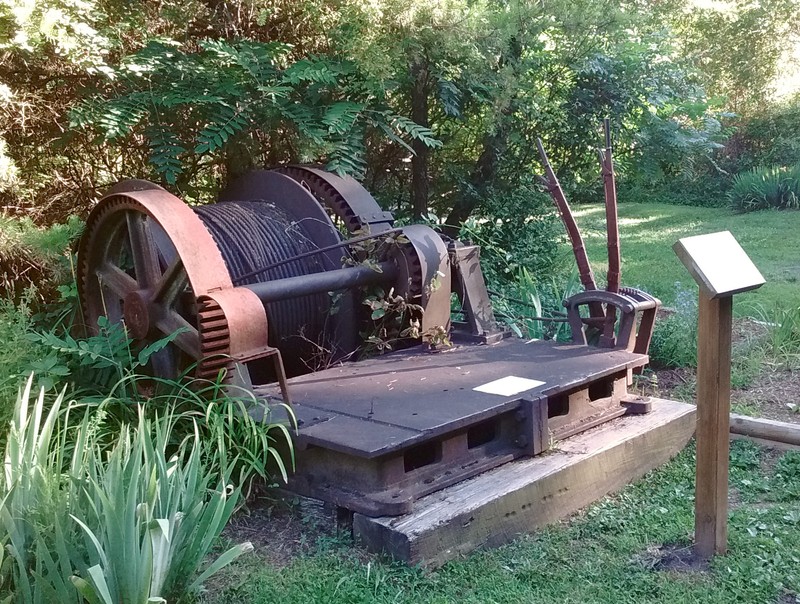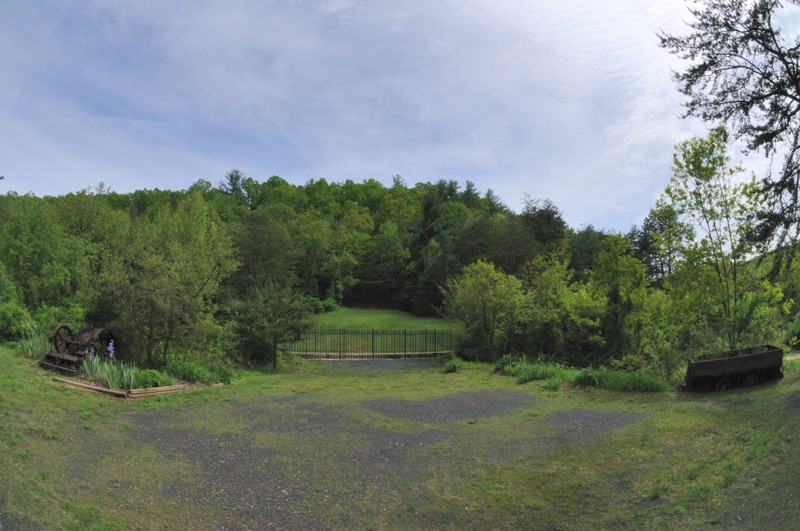Coal Mining Heritage Park and Loop Trail
Introduction
Text-to-speech Audio
Images
Abandoned coal mining equipment at the Coal Mining Heritage Park; image by Vejlenser - Own work, CC BY-SA 4.0, https://commons.wikimedia.org/w/index.php?curid=52421662

Coal Mining Heritage Park: Merrimac Mine along the Hucklberry Trail in Montgomery County, Virginia

Backstory and Context
Text-to-speech Audio
The Huckleberry Trail is a seven-mile rail trail in Montgomery County, Virginia. This 12-foot-wide asphalt trail connects the towns of Blacksburg and Christiansburg. It derives its name from the former route of the Virginia Anthracite Coal and Railway Company; the "Huckleberry" moniker was introduced by the railroad's passengers, who would pick huckleberries from alongside the tracks during the railroad's frequent service interruptions and breakdowns. Passenger service ended in 1958 and led to the line's abandonment in 1967. The path was later converted into a pedestrian trail, opened in December 1996. Near the village of Merrimac, the Huckleberry trail passes through a 29.2-acre abandoned coal mine, now the Coal Mining Heritage Park.
The park, which is located on the site of the former Merrimac Mine, once hosted a coal tipple, hotel, general store, Pentecostal church, and residential housing for the coal miners. Merrimac's mining community included the miners and their families who cultivated gardens and raised livestock in addition to mining coal. During the American Civil War, coal mined in Merrimac was reportedly used by the rebel ironclad, the Merrimac (also known as the Virginia) during its famous battle with the Monitor at Hampton Roads. The mine closed in the 1930s, leaving behind the ruins of the former industrial complex and mining community.
In the spring of 1999, the "Coal Mining Heritage Park Project" was undertaken by a partnership of university, community, and regional organizations to design a space at Merrimac that could be used for community recreation and heritage education. Radford University's Anthropology Program collaborated with the Montgomery County Planning Office (the owners of the Merrimac property), the Coal Mining Heritage Association of Montgomery County, and the state archaeologist in the region's heritage preservation office. This work, which formed the basis of Radford University's Fall 1999 Applied Anthropology Class, resulted in the development of the Coal Mining Heritage Park at Merrimac. The dedication ceremony was held in September of that same year.
In 2010, the Huckleberry Loop Trail was expanded via the Coal Mining Loop Trail, designed and constructed by approximately 15 volunteers over 1,935 hours from Pathfinders for Greenways, a non-profit organization. The 1.5-mile addition is designed to meet International Mountain Bike Association standards and to accommodate cyclists, joggers, and walkers. Additionally, there is a .25-mile section that is wheelchair accessible. The park offers visitors the opportunity to explore 100 years of history, the remains of the abandoned Merrimac Mine, and six distinct biozones.
Sources
"Coal Mining Heritage Park and Loop Trail". Montgomery County, Virginia. Accessed February 12, 2017. http://www.montgomerycountyva.gov/content/15989/16578/19399/19401.aspx.
La Lone, Mary B (Ed.). "Coal Mining Heritage Park, Montgomery County, Virginia: Study, Plan, and Recommendations." Radford University Department of Sociology and Anthropology, February 2000. Accessed February 12, 2017. http://mlalone.asp.radford.edu/Merrimac_Coal_Mining_Heritage_Park_files/Coal%20Mining%20Heritage%20P....
"Huckleberry Trail" Wikipedia - The Free Encyclopedia. Accessed February 12, 2017. http://en.wikipedia.org/wiki/Huckleberry_Trail.
Veljenser, https://commons.wikimedia.org/wiki/File:Coal_mining_equipment_at_the_Coal_Mining_Heritage_Park.jpg, CC BY-SA 4.0
Steve Tatum, https://www.flickr.com/photos/setatum/3541369782/in/photostream/, CC BY-NC-ND 2.0
